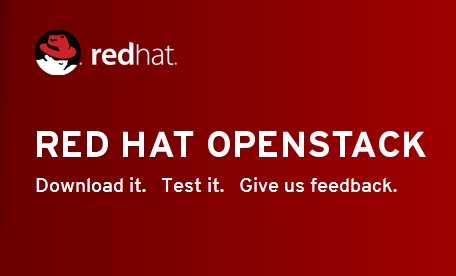Red Hat bets its cloud future on OpenStack

The big news coming out of Red Hat's annual conference, Red Hat Summit, isn't so much about Linux as it is about the company's growing commitment to OpenStack cloud technology.

After 20 years, Red Hat will never leave Linux, but for future revenue, Red Hat clearly has its eyes on OpenStack and the cloud. At the Boston-based conference, Red Hat made one OpenStack announcement after another.
Perhaps the most important is that Red Hat has now launched its own OpenStack-based infrastructure as a service (IaaS) private cloud, Red Hat Cloud Infrastructure (RHCI). This package, which is aimed squarely at VMware's vCloud Suite and Microsoft's Azure, is based, of course, on Red Hat Enterprise Linux (RHEL) and uses Linux's built-in virtualization hypervisor, KVM.
According to Red Hat, RHCI is designed to address this need, and enables organizations to build and manage a private cloud while providing an on-ramp to a highly scalable public-cloud-like infrastructure based on Red Hat OpenStack. Gary Chen, IDC's research manager for Enterprise Virtualization Software, thinks Red Hat may be on to something here. "As organizations migrate from traditional virtualization deployments to cloud architectures, the focus is shifting from just the hypervisor to the entire stack of cloud software, which includes IaaS cloud system software and hybrid cloud management. As customers start evaluating technologies like OpenStack for cloud, Red Hat's new solutions are well positioned to generate interest from the industry."
To help businesses build applications on top of the Red Hat/OpenStack cloud offering, Red Hat suggests that its JBoss middleware stack is just what your IT department will need. Specifically, Red Hat is offering tools such as Windup to help businesses move from from proprietary application servers to Red Hat’s open-source JBoss Enterprise Application Platform.
The Raleigh, NC-based Linux giant is also offering Red Hat CloudForms to monitor and manage your existing heterogeneous virtual machine and cloud servers. You can use CloudForms to deploy, monitor, and manage cloud services across Red Hat Enterprise Virtualization, VMware vSphere, Microsoft Azure, and Amazon Web Services.
Finally, Red Hat is also blending its Storage and OpenStack services to make it easier for enterprises to deploy and manage private and public clouds with its unified storage services for OpenStack supporting Block Storage (Cinder), Image Service (Glance) and Object Storage (Swift) from the same storage pool. The company claimed, "Red Hat Storage has the ability to run storage and compute services on the same physical or virtual server to further reduce the cost of OpenStack infrastructure."
Put it all together, and you get Red Hat attempting to become your one-stop IaaS, and with its OpenShift package, platform as a service (PaaS) provider. They're not the only ones. Amazon, Microsoft, VMware, and Google all want to be your go-to cloud services provider. Still, Red Hat brings top-of-the-line Linux and open-source credentials to the business cloud, so I'd rate them as real cloud contenders at this point.
Related stories